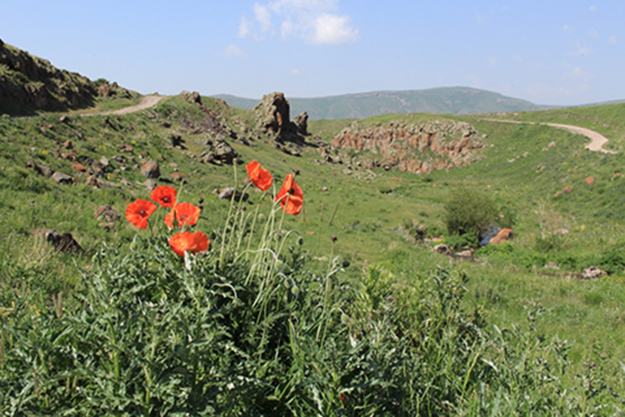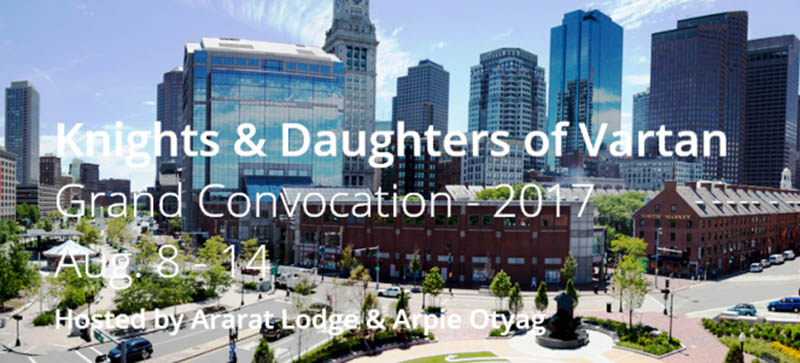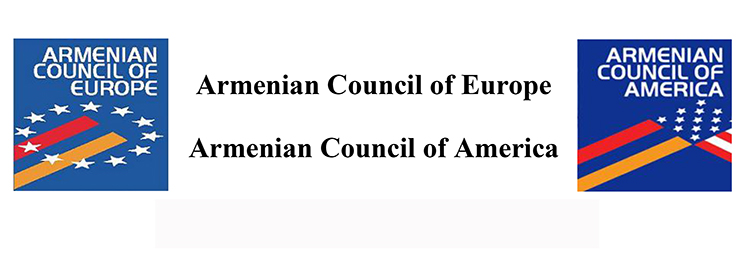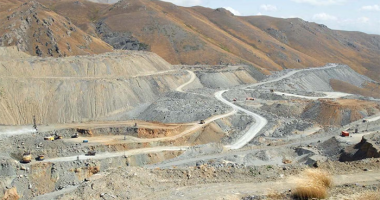By Hovsep Dagdigian
About a year ago I published an article on the scenic village of Ayrk in Gegharkunik province which I visited with my friend Vova. Our vehicle at that time was incapable of traversing the hilly, unpaved roads to the nearby villages of Verin Shorzha and Nerkin Shorzha. This year, with access to an appropriate vehicle, we made it to these two villages.
The three villages, Ayrk, Verin (Upper) Shorzha, and Nerkin (Lower) Shorzha are above the tree line at about 7,000 feet altitude in the mountains south-east of Lake Sevan. Verin and Nerkin Shorzha are accessible via an unpaved road, with only scant hints of remaining Soviet era asphalt, from Vartenis to Ayrk and then to the two Shorzhas. Beyond Ayrk the roads are hilly, traversing valleys cut by streams with abundant wild flowers along the side of the road.
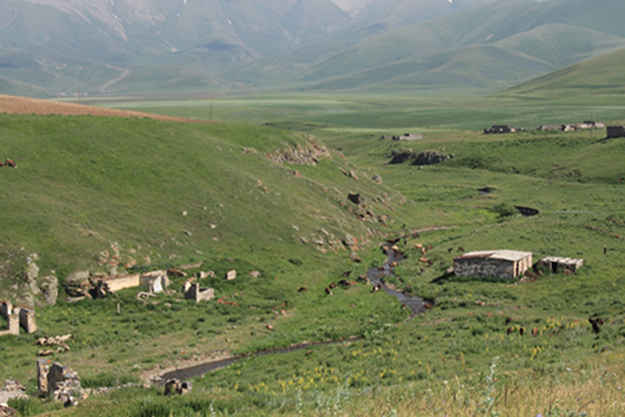

Verin Shorzha
We drove to Verin Shorzha in foothills of the local mountains passing a river running through a gorge with beautiful stone cliffs. Verin Shorzha is nestled in a fold in the mountains with cattle grazing on the floor of the adjacent valley. There used to be a church or chapel in the village 35-40 years ago but the villagers remembered nothing of this. There is, on the slope of the valley, a khachkar where villagers go to pray and light candles. This may have been the site of the church or chapel which is now completely gone. Only a handful of village “residents” remain here year around; most go to Russia and return to the village in the summer. We met one woman with her grandchild who attends school in Vartenis, over two hours away; there is no school in Verin Shorzha. You don’t see a lot of kids playing here.
The village economy is based on raising livestock (sheep and cattle) and crops which can withstand severe winters such as wheat and potatoes. Villagers complain that they get only 100 tram for a liter of milk; less than the price of a liter of water. Ten liters of milk are used to make one kilogram of cheese which sells for 2,500-3,000 tram in the retail markets. Similar markups exist for the meat they produce and sell. But the villages do not benefit from these retail prices. We met a shepherd tending his sheep. His three sons are in Russia. He is attached to the land, but thinks maybe he’ll sell his sheep and go live with his sons. But then, he thought, “This place is beautiful. What would I do in Russia?” A man we met, very well read and articulate, praised the Armenian people. He said Armenians are intelligent, hard-working, honest, and innovative. But, he added, the 5-10% that run the government are making conditions in Armenia worse and are not taking actions to better the nation. He did not see how things could change for the better.
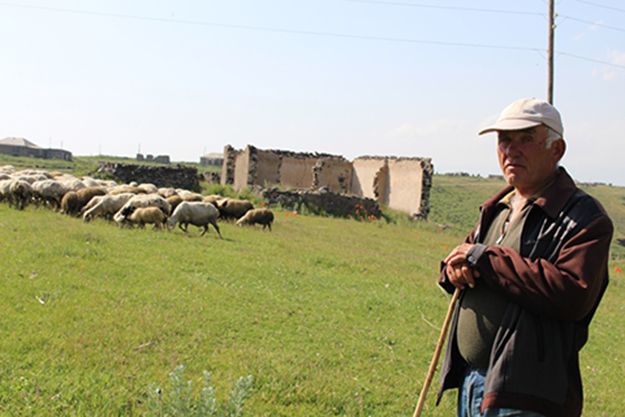

There are burned out houses here which belonged to Azeris before the Karabagh war. I was told that this was originally a completely Armenian village (as it is once again). Azeris moved in around 1928, left, then came back. They left again during the recent war.
As we were leaving the village a man flagged us down. He was about 40 or so and was naturally curious about who we were, as no one visits this village! I asked him about winters here. Winters are severe with a lot of snow. “Does the government plow the roads?” I asked. “We never see the government” he replied. The village mayor has a tractor, he plows the road. The villagers proposed building a small hydroelectric station on the river here but the government rejected their proposal. I don’t know the reason. Perhaps it was not economically viable, or perhaps there were technical difficulties.
This place is astonishingly beautiful, with verdant green fields, amazing flowers, invigorating air, and wonderful people who deserve a better life.
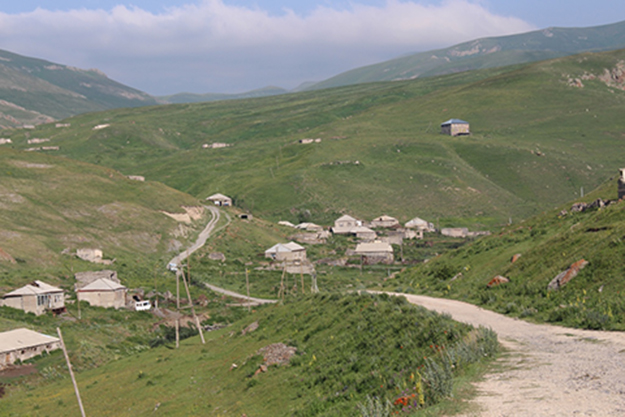

Nerkin Shorzha
Driving to Nerkin Shorzha we once again traversed beautiful scenery, bright wild flowers, and beautiful rock formations. This village too is very small. In it is the foundation of a church dating perhaps to the 10th or 12th C, no one knows for sure. A few years ago the villagers built an attractive wooden church upon the old foundation. A woman who looks after the church showed us the few remaining stones from the old church which were inserted into the wall of the rebuilt church and placed next to the altar. Also incorporated into the church were a few old tombstones. There seemed to be a few more children in this village. I don’t know if they live here year round or are visiting for the summer.
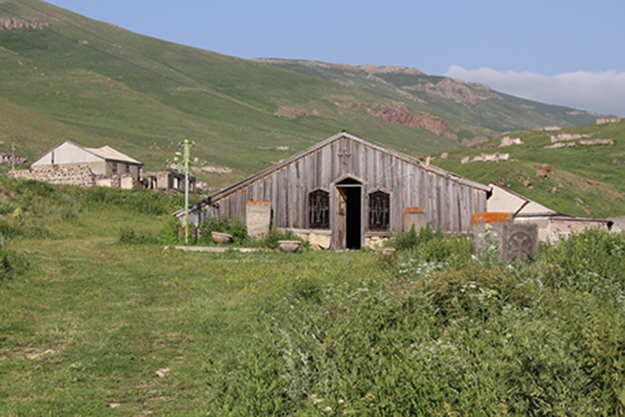

Possibilities
It seemed to my friend Vova and me that perhaps the villagers could process their own milk into cheese and profit from the value added. If they tried this I don’t know what political or economic forces they would have to contend with. This area also seems suitable for a small hotel or rest house. The scenery is wonderful and the cool air invigorating. There appears to be little or no social life here. Perhaps a small community center with an Internet room, maybe a small theatre with a large screen TV for showing movies, and clubs for chess and outdoor activities such as horseback riding and hiking would help make the village attractive for visitors seeking a break from the traffic and heat of Yerevan’s summers.
Within the three neighboring villages there are no trees for lumber or fuel. Sources of energy are cow manure, which the villagers dry and then use for fuel, and electricity. Electric rates are due to go up shortly placing an increased financial burden on Armenia’s people and especially on Armenia’s poor. The rate increase has sparked protests throughout Armenia.
When visiting such sites one is inspired by the beauty of our land, and the friendliness and hospitality of the people. One is similarly incensed by the apparent indifference or inability of the government and other organizations to help improve these people’s lives. While the roads in Yerevan are paved over and over again and more flowers are planted along Yerevan’s streets, many of Armenia’s villages appear to be forgotten. Armenia is more than its capital. People in Armenia’s small villages are strong and resilient. They can deal with adversity. What they find difficult to deal with is the apparent indifference to their isolation and the difficulties they face. Eliminating the sense of isolation of such villages, whether perceived or actual, is important. Such beautiful villages should be on tourist agendas. Such places are a part of the Armenian reality and must be embraced.
My article on the village of Ayrk may be found by Googling “Ayrk Dagdigian”.

